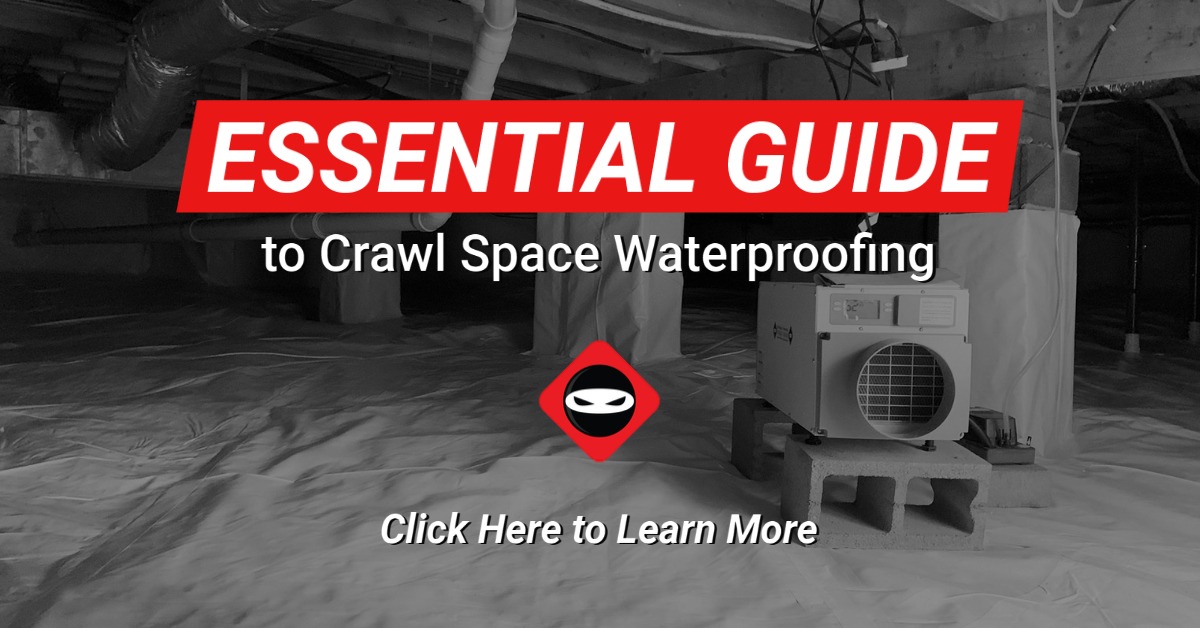Many crawl space fans can be noisy. We offer a quiet crawl space fan solution that homeowners find is a better option without the noise. Crawl space fans tend to rattle due to the materials they are made with. Plus, the way the foundation vent fan must be installed can create a vibration that can be heard inside the home. For those of you with sensitive hearing, the Whisper Fan may be a great option for your crawl space.
Typical Crawl Space Fans
Many fans installed in crawl spaces are the typical foundation vent fan. This is a great option for most crawl spaces due to their easy installation and low cost. Unfortunately, since they are attached directly to the foundation wall, they can vibrate. For most people, this can be annoying but just like that refrigerator noise, it eventually fades into the background. For others, it’s like nails on a chalkboard.
Common Foundation Ventilation Issues
Another problem we face is the foundation wall may be too difficult to install a typical foundation vent fan. Perhaps electricity cannot be run or the space is too low to work in. Having an alternative vent fan system like the Whisper Fan will give you options to ensure your crawl space is properly ventilated.
The Most Versatile Crawl Space Fan
Not only is the Whisper Fan one of the quietest fans available, but it is also very easy to install and extremely versatile.
Let’s say you have a crawl space that is sectioned off that prohibits air movement. When using a typical foundation vent fan, you’d need to install one per space.
The Whisper Fan can be installed in one area of the crawl space and ducted to the other area. The ducting can either pull air from or push air to the other space. Also, you can add a T or Y connector and run multiple ducting lines if needed. All of this can be done using one fan and one electrical outlet.
A Powerful and Quiet Crawl Space Fan
The Whisper Fan is both quiet and powerful. A typical foundation vent fan moves about 110 CFM (cubic feet per minute) of air. The Whisper Fan moves 120 CFM of air with less noise output. You don’t have to worry about sacrificing power for noise reduction.
The Whisper Fan can also be attached to a dryer vent hood. This can reduce the backflow of air into the crawl space from the outside when the fan is off, while also reducing bugs and other critters from entering the crawl space. Typical foundation vent fans are unable to do this.
The Whisper Fan Warranty Beats the Industry Leaders
The Whisper Fan also comes with a better warranty than most foundation vent fans. Many fans carry a 90-day to 12-month warranty. The Whisper Fan boasts a full 3-year manufacturer warranty. If you are someone who is sensitive to sounds, I encourage you to check out the Whisper Fan.
Contact Crawl Space Ninja for Basement Waterproofing and Encapsulation
Please contact us to schedule your assessment to fix your crawl space, basement issue.
Do you need help with mold removal, crawl space encapsulation, crawl space insulation, vapor barrier, waterproofing, foundation repair, basement waterproofing, or controlling humidity in your crawl space?
If you live in Georgia, Delaware, North Carolina, South Carolina, Tennessee, or Kentucky, Crawl Space Ninja can help!
Also, let us know in the comments below if you have an idea for a new blog topic.
DIY Crawl Space Repair
Perhaps you’d like to tackle your own crawl space repair. Visit our DIY Store.
Join Crawl Space Ninja as an Owner
Learn about Crawl Space Ninja Franchise opportunities.




Michael Church’s Crawl Space Repair Myths-Busted book was written to help you Avoid Bad Advice, Bad Decisions, & Bad Repairs.
“This book is the Cadillac for crawl space information and Michael Church is your experienced driver. What can I say? It’s just an amazing read.” 5.0 out of 5 stars The real deal.



2 thoughts on “A Quiet Crawl Space Fan Solution”
Have an enclosed mobile home 12×70. North end is 3 1/2 feet off ground. South end drops to 14 inches. Have had moisture issues on low end. Have floor up and replacing moist subfloor with 3/4 inch plywood. Would a small exhaust fan help with this problem? Don’t want to just cover it up and have same issue a year from now. Maybe moisture barrier and exhaust fan? Sure could use some advice. I live in Texas and it’s 105* today.
If TX is humid, exhaust fan may not be enough. Vapor barrier at least covering all dirt plus a dehumidifier and exhaust fan would be my recommendation. Here is a video of a fan vs a dehumidifier. https://youtu.be/KlUSPyZ18Yw